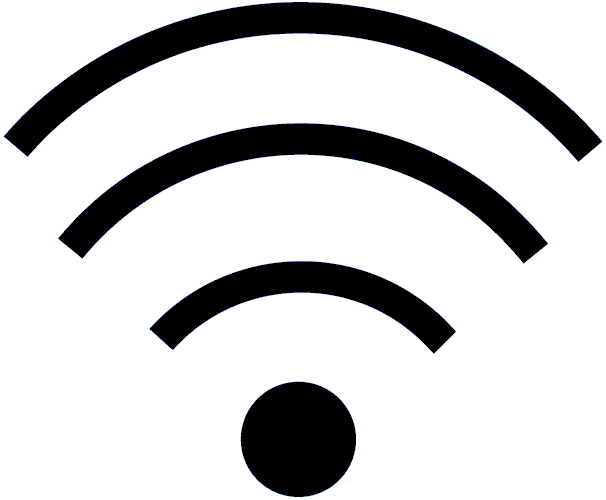What is a WiFi hotspot?
WiFi hotspots are internet access points that allow you to connect to a WiFi network using your computer, smartphone or another device while away from your home or office network.

Many cities, businesses, and other organizations have begun offering WiFi hotspots for public use. These hotspots help people access faster internet connections than what is often available cellular networks.
So, how does a WiFi hotspot work? Are they safe? Get all the information you need below.
How does a WiFi hotspot work?
A public WiFi hotspot works, from the user's end, much like a WiFi network that you might find in your home or office. These hotspots transmit an internet connection using special wireless equipment, to create a WiFi network to which you can connect a tablet, smartphone, computer, or other device.
The range, power, speed, and price of a WiFi hotspot may vary, based on where you are. But the overall idea behind a WiFi hotspot is exactly the same as a home-based WiFi network, and you can connect to and use a WiFi hotspot just like you would use a home WiFi network.
Types of WiFi hotspots
Though WiFi hotspots are largely similar, there are a few different types available, and they have some distinct differences.
Public WiFi hotspots
A public WiFi hotspot is exactly what it sounds like. These hotspots are usually, though not always, free to use. Places like coffee shops, libraries and retail stores may offer a free, public WiFi connection for patrons. In some cities, municipal governments or ISPs may also provide free public WiFi connections in some areas. These are usually free, but in some areas, like hotels and airports, you may have to pay to access a public WiFi hotspot.
Mobile WiFi hotspots
Did you know that you can use your iPhone or many Android smartphones as a WiFi hotspot? By turning on this feature, your phone uses its cellular data to create a WiFi hotspot. You can then connect a computer or other device to this hotspot to access the internet.
You can also buy purpose-built mobile WiFi hotspots, which are designed to turn a cellular data connection into a strong WiFi connection. People who travel a lot for work or who need constant access to a reliable WiFi connection can use one of these devices, which can be purchased from most cell phone companies.
Pre-paid hotspots
Prepaid WiFi hotspots are similar to mobile hotspots, but set limits on how much data you can transmit over the connection. You prepay for a set amount of data, and then when you run out, you can automatically pay for more. This is a good way to get a mobile hotspot without a long-term cellular data subscription.
Are WiFi hotspots safe?
Private WiFi hotspots, such as mobile and prepaid versions, are completely safe. When it comes to public hotspots, however, the security methods used to protect your data can vary widely.
As a rule, it’s recommended that you not do anything over a public WiFi hotspot that could compromise secure personal data, such as checking out on shopping sites (providing payment information), using banking apps, or accessing medical records. For other activities like web browsing, checking email, and using social media, though, public WiFi hotspots tend to be safe.
How to find WiFi hotspots
The easiest way to find WiFi hotspot is to open up your computer or tablet and check your available networks list. In many public areas, you’ll find that there are a lot of open, public WiFi hotspots you can connect to, free of charge. You can also look for WiFi hotspots provided by your own ISP.
How to set up a WiFi hotspot
Wondering how to setup a WiFi hotspot for yourself? The easiest way is to use your Android or iOS smartphone as a mobile hotspot. Read this guide from Google to give it a try on Android, or read this guide from Apple to try it on your iPhone or iPad.
Brightspeed wireless
At Brightspeed, we provide high-quality secure WiFi to commercial and residential customers. To see what internet speeds are available near you, click the link below.
Top tools
Log in to access our most popular tools.
Was this page helpful?
Brightspeed services support

.png)





.png)



